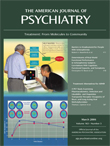Brain Fiction: Self-Deception and the Riddle of Confabulation
From a clinical point of view, Korsakoff’s syndrome, anosognosia for hemiplegia after stroke, split-brain syndrome, aneurysm of the anterior communicating artery, schizophrenia, Anton’s syndrome (pathological denial of blindness), and Alzheimer’s disease are completely different disorders. Patients affected by these conditions, however, may have something in common, namely, a tendency to confabulate. According to William Hirstein, this is best described as an individual’s continual tendency to unknowingly make ill-grounded claims that he or she should know are ill-grounded. Following Hirstein’s concept, one common feature of confabulating patients is that they claim to have certain abilities that in reality they lack. This might involve the person’s ability to remember things from the past (in the case of Korsakoff’s), or to move an arm (in the case of anosognosia), or, in the case of split-brain patients, to provide a valid explanation why their left arm just did something. And yet, confabulating subjects are not knowingly trying to deceive, or making things up. In fact, they do not have the intent to lie or deceive. They just don’t know better! Or put more precisely: confabulators don’t know that they don’t know what they claim. Accordingly, confabulatory individuals have a knowledge deficit, a pathological certainty, which defines confabulation as an epistemic (knowledge-based) phenomenon.
In Brain Fiction, William Hirstein aims not simply to better understand the clinical phenomenon called confabulation. Rather, he is driven by the goal to disentangle the “riddle of confabulation” in order to learn more about one of the most intriguing abilities of the human mind: In order to adequately act and interact within a complex environment our intellect has to constantly create and represent relevant knowledge which, as a result of some evaluating process, should be as “true” as possible. However, how do we discern fiction from reality? How can we be sure that facts are not fantasy? Hirstein develops an answer to these questions by taking his readers on a fascinating journey starting from concrete (neuroscientific) data and moving to the abstract (conceptual or philosophical) level of the phenomenon under investigation. Accordingly, the first part (chapters 3–7) of the book is devoted to the description and analysis of empirical (neuroscientific) konwledge about different confabulating syndromes. He carefully collects and arranges data derived from cognitive neuroscience, psychopathology, neuropsychology, and neuroanatomy including clinical observations and classical lesion studies as well as brain imaging studies. These chapters are enriched and illustrated by many case histories, including some “old acquaintances” such as Phineas Gage or Scoville and Milnner’s classical case H.M. This provides stimulating reading. Some passages of the text could even be read as a “mini-textbook” of neuropsychiatry. We thus learn about the nature of neurological damage in memory confabulation syndromes (chapter 3), about the role of the orbitofrontal cortex and its lesions for the etiology of confabulation as well as for the explanation of communication deficits in sociopathy (chapter 4). We are further taught about the significance of “mind-reading” (or theory of mind) deficits for the understanding of confabulation in misidentification syndromes such as Capgras’ syndrome (chapter 5), and about the neuroanatomical basis of confabulations in patients with anosognosia (chapter 6) and split-brain syndrome (chapter 7). It appears that confabulation consistently follows damage to brain areas involved in the implementation of certain knowledge domains (e.g., the inferior parietal cortex), coupled with lesions to or disconnection from orbitofrontally located monitoring or checking processes. Based on these conclusions, chapter 8 is devoted to define and conceptualize confabulation primarily as an epistemic problem resulting from failures within a two-stage knowledge-creating process. The first stage of this process (creation phase) refers to the creative ability of the human intellect to constantly produce hypothesis and/or representations about the self and its environment. These representations might be more or less true (real). Accordingly, a second stage (checking phase) is required that involves the monitoring, verification, and selection of the initial thoughts. By applying this concept to the inherent human tendency of self-deception (chapter 9), Hirstein demonstrates that his thorough analysis of the clinical phenomenon confabulation indeed reveals and clarifies a universal mechanism of the human psyche. This is the remarkable power to form mental representations (of ourselves and of the world we are living in) and simultaneously maintain the dynamic equilibrium between those creative and some inhibiting forces. Or, as Hirstein puts it, “in the healthy human mind this creative faculty does not work alone; it works in tandem with processes designed to evaluate its interpretations, and if necessary, prevent them from being expressed or acted upon.” One major strength of this book is certainly that it fruitfully and convincingly integrates perspectives from both neuroscience and philosophy in order to shed light on the cerebral mechanism behind one of the most fascinating competencies of the human mind. Thus, it is far more than a thorough and comprehensive monograph on the clinical phenomenon of confabulation. It is neurophilosophy at its best!



